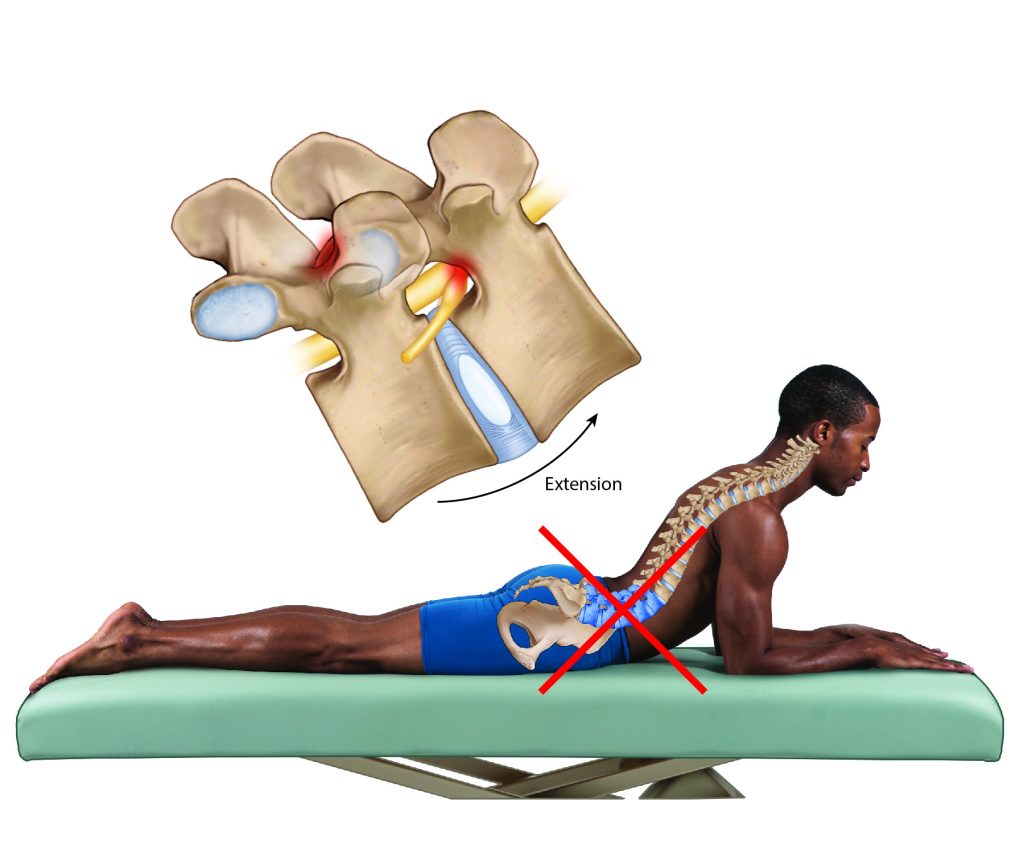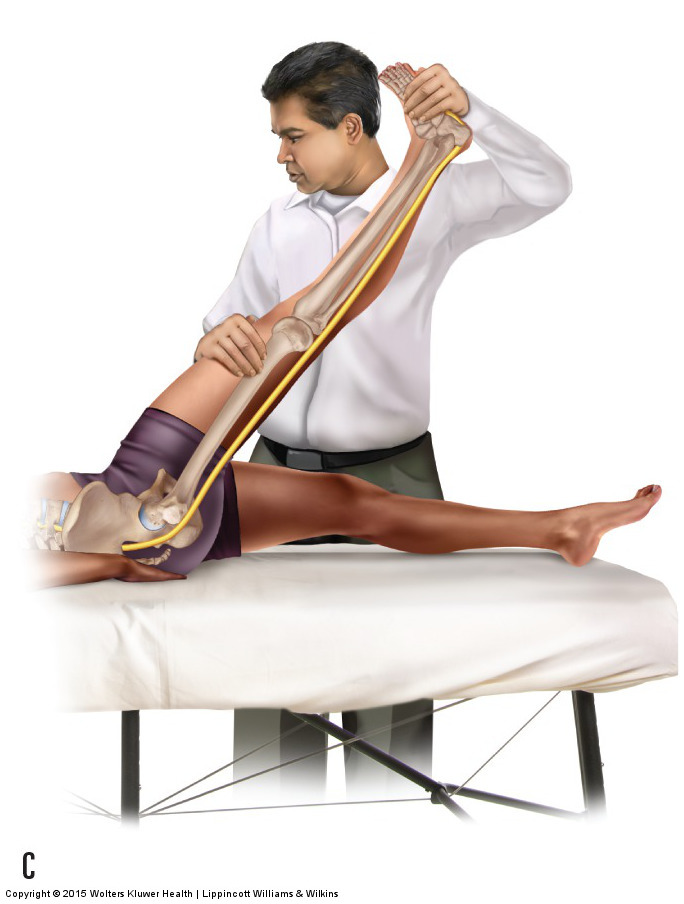This blog post article is part of a series of articles on assessment of the low back and pelvis. Scroll to the end of this article to see the others in this series.
Introduction

Extension of the lumbar spine. Permission Joseph E. Muscolino.
To provide proper therapeutic treatment to a client’s low back and pelvis, it is necessary to perform an accurate assessment of the client’s condition and gain a clear understanding of the mechanism behind the pathologic condition. This series of blog post articles covers the assessment procedures that should be performed before treatment can be decided upon. The review of anatomy and physiology as well as a discussion of pathologic conditions of the low back and pelvis have already been covered in previous blog post articles on The Art and Science of Kinesiology (Learnmuscles.com) website.
Assessment usually consists of two main parts
- Health history. When meeting with a new client, or when seeing a repeat client who has a new condition, begin the assessment by obtaining the health history, which is a written and/or verbal history of the client’s health. The intention behind the health history and the examination is to gain a thorough understanding of the client’s specific condition(s) so that proper treatment can be applied.
- Physical assessment examination. This examination usually involves several components:
- Postural assessment
- Movement assessment
- Range of motion (ROM) assessment
- Palpation assessment
- Motion palpation (joint play) assessment
- Special orthopedic assessment
These assessments are recommended to all therapists when assessing a client’s condition, although they need not be done in the order shown here.

Passive Straight Leg Raise. Permission Joseph E. Muscolino. Manual Therapy for the Low Back and Pelvis – A Clinical Orthopedic Approach (2015)
After gathering all the information from the health history and physical assessment examination, the assessment is made, and the appropriate treatment strategy is determined. The next step is to complete a report of findings, in which the client is informed of what was found in the assessment and what treatment is recommended. With the client’s consent, treatment can begin.
Summary
There is an adage in the world of medicine that treatment should never be administered without a diagnosis. Similarly, in the world of clinical orthopedic manual therapy, treatment should only be performed if an assessment is first made. This set of blog post articles covers the orthopedic assessment tests that manual therapists can perform to assess their clients’ lower back and pelvic conditions. Of course, there are limits to the ability of these tests to fully and accurately assess every condition. If after performing these assessment tests, there is still doubt about the client’s condition, referral should be made to a physician for an accurate and thorough diagnosis/assessment. Once the therapist is armed with an accurate assessment, and therefore a fundamental understanding of the pathomechanics of the client’s condition, safe and effective treatment can be determined and carried out.
Note: Diagnosis versus Assessment
Although it is a fine line, there is a distinction between diagnosis and assessment. With a diagnosis, a physician definitively determines the condition that a patient has and informs the patient of the findings. Assessment, on the other hand, is carried out not for the purpose of informing the client of the condition but to help the therapist determine which treatment techniques are safe and effective to perform and which treatment techniques to avoid. Of course, if there is any doubt as to the safety and efficacy of treatment, referral of the client to a physician for a definitive diagnosis is strongly recommended.
This blog post article is the 1st in a series of 18 blog posts on the subject of assessment of the low back and pelvis.
The blog post articles in this series are:
- Introduction to Assessment of the Low Back and Pelvis
- Health History
- Introduction to Physical Assessment Examination of the Low Back and Pelvis
- Postural Assessment of the Low Back and Pelvis
- Range of Motion and Manual Resistance Assessment of the Low Back and Pelvis
- Muscle and Bone Palpation of the Low Back and Pelvis
- Joint Motion Palpation Assessment
- Overview of Special Orthopedic Assessment Tests of the Low Back and Pelvis
- Straight Leg Raise Tests for Space-Occupying Lesions
- Cough Test and Valsalva Maneuver
- Slump Test
- Piriformis Stretch Test
- Straight Leg Raise and Manual Resistance Tests for Strains and Sprains
- Nachlas and Yeoman’s Tests
- Sacroiliac Joint Medley of Tests
- Treatment Strategy for the Low Back and Pelvis
- Self-Care Advice for the Client with a Low Back / Sacro-Iliac Joint Condition
- Brief Review of Assessment and Treatment of Conditions of the Low Back and Pelvis
(Click here for a blog post article in the Joints of the Lumbar Spine and Pelvis.)


